
A smart environment can help you keep your dog safe and happy. Beyond simply caring for their animals, pet owners have numerous other duties. As a result, they might not spend as much time as they would like with their fur babies.
However, you want to be able to check on your pets even when they’re not with you because you’re a conscientious pet owner. You want to guarantee that their requirements are satisfied and that they are safe and comfortable.
Thankfully, technology provides you an opportunity to accomplish these things.
You may make sure that your pet gets the care they need even when you are not at home by using certain gadgets, such as climate-controlled cars, cloud-managed webcams, and automatic feeding.

A smart environment is one in which electronic equipment such as computers collaborate to improve human comfort.
Technically speaking, these devices need to complete certain activities on their own and function well even with little assistance from humans.
A smart environment for pet owners also includes utilizing technology to simplify the task of providing for their animals.
Technologies That Are Pet-Friendly
More often than not, fascinating new technologies are introduced in the market. These days, several of these technologies are being utilized to develop pet-focused solutions that enhance the lives of both pets and pet owners.
It is easy to forget when it is time for your pet to eat when you are overworked and occupied. Pet feeders with intelligence offer a solution to this issue.
You may program smart feeders to automatically administer pet food according to a schedule. Even when you are not there, you can still feed your pet on schedule, every day. Just remember to restock it as soon as the feeder runs empty.
Security isn’t the only use for home cameras. They can also be used to observe or check on activities within your house.
Having security cameras in your home gives you the ability to visually check on your pet’s whereabouts and activities.
For instance, you might think your pet has a flea problem when you are gone from home. You can use your home cameras to watch your pet from a distance in this scenario.
Consider purchasing natural flea repellents for your pet, such as essential oils, from a pharmacy before you leave for your house if your pet is always scratching and itching.
There are numerous choices for installing cameras. However, having as little physical equipment at home as feasible (apart from the cameras themselves) may be desirable if we are talking about a smart environment.
With cloud-managed cameras, you can monitor your pets more intently and spend less time on deployment and maintenance because you won’t need cumbersome infrastructure like servers and video storage.
It should be simple to set up these cameras with little equipment. When combined with fast internet, you can see your pets from a distance even when you’re away on business.
Using wearable technology, you can keep an eye on your pet as well.
With GPS trackers, you can monitor your pet’s location. Because these gadgets are small and light, you can discreetly fasten them to your pet’s collar.
There are GPS trackers that let you set up “safe zones” for your pet. Let’s say your pet goes beyond the bounds of the zone. The gadget can then warn you of your pet’s whereabouts by sending you an alert.
A fitness tracker is an additional wearable gadget. These gadgets can measure your pet’s heart rate, distance covered, and caloric expenditure.
While your pet is receiving therapy or medicine, fitness trackers can be a useful tool. Fitness trackers have alert features just like GPS trackers.
Fitness trackers can also be used to arrange for your pet’s veterinarian visit, medication schedule, or to remind you to give your pet dietary supplements like glucosamine, fish oil, or plant extracts and oral tinctures for dogs.
Pets want playtime and entertainment as well. They could get fidgety if you’re not around to play with them.
You can communicate with your pets even when you’re not there to do so thanks to toys that are remotely connected. Your pets can hear you as they play with these toys since some of them have cameras and others have audio.
Among these toys are remote-controlled ball launchers that toss balls for dogs to recover and interactive cubes, which are compact, cube-shaped cameras that are pet-friendly.
Pet owners frequently bring their animals along in their cars, particularly when making a quick trip to the grocery store or a drive-thru restaurant.
Leaving your pets inside the car, however, could be risky because they could suffocate or suffer from heat stroke if left alone for an extended amount of time.
These days, some cars come equipped with a climate control system. Pets may remain cool and have adequate ventilation thanks to this feature, which maintains the interior temperature even when the owner is outside the vehicle.
These days, technology plays a big role in daily life. A smart environment not only benefits humans, but it also keeps dogs safe and comfortable.
However, you shouldn’t rely solely on technology to take care of your pets. Device malfunctions and lost internet connections are also possible.
Interaction between humans and animals cannot be replaced by technology. It is still preferable than having no way to check on your pet while you are gone from home.
As technology advances, gadgets will get even more dependable and contribute to the development of a closer relationship between you and your pet.
If you are interested in a Posh Dog Knee Brace contact us via our contact page or visit our Facebook page.
Hey guys, this is Nikki Lead Veterinary Technician with Posh Dog knee Braces, and today I would like to talk about the prevalence of dog obesity, and the affects it has on your dog’s health. It seems that people were not the only ones who were affected by Covid, as the amount of obese pets has also really come up since the pandemic. Maybe it is because more people are working from home, and thus giving more food or treats to our pets. Either way, we are definitely seeing a very bad trend.
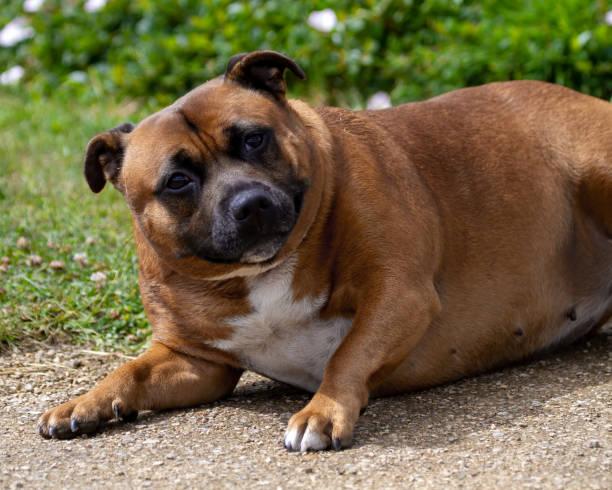
Just like in people, this causes a huge strain on our heart, organs, and yep you guessed it, the joints. Overweight people are so much more likely to have knee and hip replacements, as well as many health issues. The same thing goes for our dogs. Just last week I have had to decline 5 beautiful dogs from getting knee braces, because we just physically can’t brace their dog due to the enlarged belly protruding past the knee. It breaks my heart, because most of these patients also can’t have surgery, due to the increased anesthesia and surgery risks involved.
Once a patient get’s into the obese category, it is very very hard to loose the weight. They are now used to eating more food, treats, and not exercising, and bad habits have now formed from both the owners and the dog. Now, I am not saying you can never give Fluffy a treat, just please be aware of the caloric intake vs. the amount of exercise you are giving to your sweet dog. Dog’s love attention, they do not need a cookie or treat every single time they beg.
There are many successful weight loss programs for dogs, and it is important to start implementing these at the first sign of being overweight. Now I am not talking about a tiny bit of chub or fluff, we are talking about an 8+ out of 10 on the healthy weight scale. To check this, simply look down at your dog’s back. You should be able to see the curve of the ribs and a nice trim tummy.
Now, if you can see each rib, that is too thin. Next, you should be able to palpate or feel the ribs easily when you pet your dog’s side. I can feel every single rib on my healthy dog if I press gently, but they are not visible. If you must push to feel for the ribs, then your dog is obese. This is an easy trick.
I challenge people to put everything your dog consumes in a day, including any treats or people food, into a container. At the end of the day you will be surprised how much your dog is actually eating. A lot of clients would come in with an obese patient and say that they are “picky” eaters.
Your dog is not a picky eater. He is holding out for the goodies he knows you will make and feed him when he doesn’t eat his kibble. He has now trained you, not the other way around. A normal healthy dog will not starve. They may get stubborn, and go off food for a day to see if you will give in and feed them some treats or people food, but they will not starve.
As for supplementing their food to help them feel more full, I recommend feeding veggies. Peas, green beans, a small amount of sweet potato or carrots (remember these also have sugar, so not too much). As a treat I really love freeze dried liver. It can come in large cubes, in which I cut it down into tiny pieces, and my girl loves them. They are naturally fat free, sugar free, and a great snack for your dog.
Diets such as the Farmers dog have become more and more popular, as they mix fresh healthy ingredients specific to your dog’s dietary needs. You will notice your dog having a healthier coat, weight, and more energy. Diet plays a big role in how our dog’s feel and look.
There are some healthy kibbles out there, but if you see a carbohydrate as a first or second ingredient, I would keep looking. Dog’s do not need a lot of carbs, they need healthy proteins. Now I’m not saying go grain free, butfind a healthy mix. Ask your veterinarian for suggestions. Maybe start cooking for your dog, you will be amazed how much your dog’s health will improve.
If you have any questions, about dog obesity don’t hesitate to contact poshdogkneebrace.com via our contact form or visit our Facebook page.
One of the key causes of dogs’ passion of chasing other animals is their prey drive. Our veterinarians can offer guidance on prey drive and safe ways to handle your dog.
For many dogs, prey drive is an instinctive behavior. Unfortunately, prey drive can occasionally result in issues, mishaps, or damage to your dog or other animals.
If your canine companion is constantly chasing squirrels or sprinting after birds when you go for walks, check out our tips on prey drive and how to keep your dog safe.

Animals with a prey drive have a hunting urge that enables them to capture food. When many dogs play, such chasing a ball, tugging games, or ripping up plush toys, you may have witnessed this. We may provide them with a secure outlet for their prey drive by encouraging these behaviors in them.
Some canines are more troubled by prey drive than others. “My dog has a high prey drive” refers to a person’s dog’s propensity to chase and catch animals such as mice, squirrels, or farm animals.
Breeds including Greyhounds, Lurchers, Collies, and Terriers are frequently known to have high prey drives. But any breed of dog can exhibit high prey drive, so it’s critical to recognize the warning signs and provide your dog with training to help curb their chasing tendency.
When near animals, exercise strict control over canines. Allowing your dog to harm or kill a farm animal is illegal, and both you and your dog may face harsh consequences. In the event that your dog is uncomfortable among sheep or other animals, you can:
In the event that your dog escapes the leash or that a farm animal pursues you:
If you are interested in more information about our Posh Dog Knee Brace you can send us a message via our contact page or visit our Facebook Page.
Does your dog receive a meal before you leave for the day but hold off on eating it until you come home? That indicates he is a little (or a lot) anxious about being left alone at home.
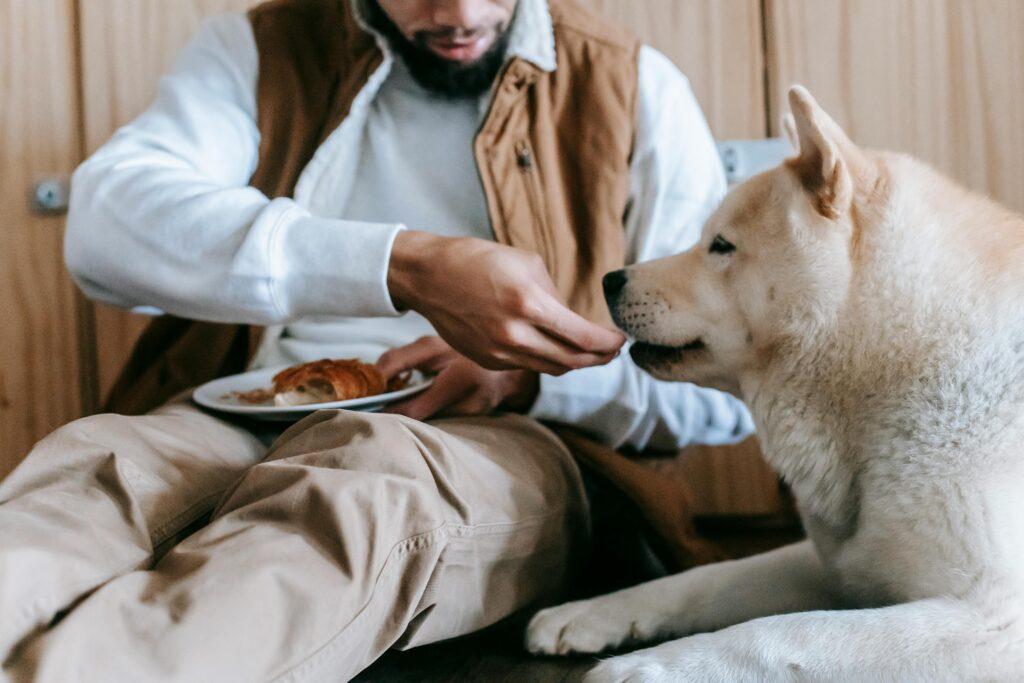
Unexpectedly many dogs refuse to eat meals while their owners aren’t home, but they scramble to finish their meals as soon as their loved ones get home. The most frequent cause of your dog’s lack of appetite while you are away is worry, and a worried dog is a cause for concern.
“But my dog doesn’t seem stressed,” you might object. If your dog only exhibits stressful behavior when left alone and her stress level is low enough that she isn’t acting out in other ways, it’s possible that you aren’t present when she exhibits her primary stress behavior, which is refusing to eat when you aren’t around.
Dog training experts frequently advise clients to leave their dogs with a slow-feeding dog toy, such as a stuffed Kong, to keep them occupied and relieve stress while their owners are away. You can’t use this useful enrichment tool if your dog won’t eat while you’re gone. And when your dog is too anxious to eat meals, it is never a good thing!
Check to see whether he/she will eat if there is another person around first. You’ll be able to discern from this if she is experiencing low-level separation stress (she must be with you) or isolation stress (he/she is fine around any person as long as she is not alone). If he/she exhibits any additional signs of anxiety, such as pacing, panting, or vocalizing, put up a cell phone, laptop camera, or security camera to record footage of her while you’re away.
His/Her anxiety is probably not too severe if there are no other indicators of stress, and you might be able to relieve his/her with an over-the-counter supplement like L-theanine (consult with your veterinarian first!).
If he/she is more distressed, you are dealing with a problem that is more serious than mild stress or anorexia. If that’s the case, I advise you to seek the help of an experienced force-free professional. These individuals would have the initials “CSAT” (for certified separation anxiety trainer, certified by separation anxiety specialist Malena DeMartini) or “SAPro” (for a “Separation Anxiety Pro” trainer, certified by Julie Naismith) and be qualified to work with separation anxiety.
Keep in mind that if your dog is stressed, help is necessary.
If you are interested in a Posh Dog Knee Brace contact us via our contact form or visit our Facebook Page.
A dog meal with a larger calorie level is the best for dogs to gain weight.
Adding more meals to your dog’s daily diet is the quickest strategy to aid in weight gain. If he typically consumes two meals per day, increase that to three or four while gradually increasing the amount of food consumed and maintaining a consistent mealtime schedule. You might also try:

If feeding your dog an extra meal is difficult due to your work schedule, check for the best dog food designed for weight increase. These meals may be labeled as weight-gain dog food, but they definitely aren’t since they have more calories, which are frequently mentioned in tiny print beneath the ingredients list. It’s more likely that you’ll see them marked for active, sport, or performance dogs, which are dogs that require more calories since they expend more energy. These foods typically cost more money. Over the course of roughly a week, gradually transition to the new diet.
But be cautious. Make sure your dog is indeed lean because, like humans, most dogs have a tendency to weigh too much, and we might grow acclimated to that look. Your dog will have a waist that is directly in front of his hips, can be felt through a thin layer of fat, and will be at an appropriate weight. He appears to be snuggled up. He is too thin if the tops of his ribs or the hip/pelvic bones are visible.
Monthly dog weight checks are an excellent guide. Just pick up the dog and step on the scale in the restroom. The weight of the dog is then determined by weighing you alone and deducting that amount. Dogs that maintain a healthy weight live longer.
Some dogs actually need to put on weight, even if the majority of dog owners are waging the war of the bulge and trying to keep their canine companions trim. Boys in their teen years, some senior dogs, and dogs with cancer or other chronic illnesses are among the typical populations who need to gain weight.
So make sure your dog is healthy before starting a weight-gain program by taking him to the vet. Along with performing a physical examination, your veterinarian will likely screen your pet for intestinal parasites and heartworms. In most cases, a complete blood panel is not prohibitively expensive and can be beneficial to rule out a variety of illness issues.
If your dog is a finicky eater, you might want to supplement some of his meals with home-cooked food. Although there are ideas online for cooking homemade meals and treats that can make you gain weight, they might not be very nutrient-dense. To assist you in creating a balanced diet depending on what you wish to feed, look for businesses that employ veterinary nutritionists. Although there is a fee, it is well worth doing this properly.
Other strategies for getting your slim dog to gain weight and eat here are as follows:
Undoubtedly, a dog that is too underweight should be avoided, but take extra care if he also appears lethargic or “not himself.” The ideal place to begin your weight-gain attempts is at your veterinarian.
If you are interested in purchasing a Posh Dog Knee Brace contact us via our contact page or visit our Facebook for more information. We’ve Helped Dogs All Around The World, Now We Want To Help Yours…
Hey guys! This is Nikki, Lead Veterinary Technician with Posh Dog Knee Braces. Today let’s talk about harnesses, and when they can be useful. First off, let’s go over the different types of harnesses, so that you are familiar with the options out there.
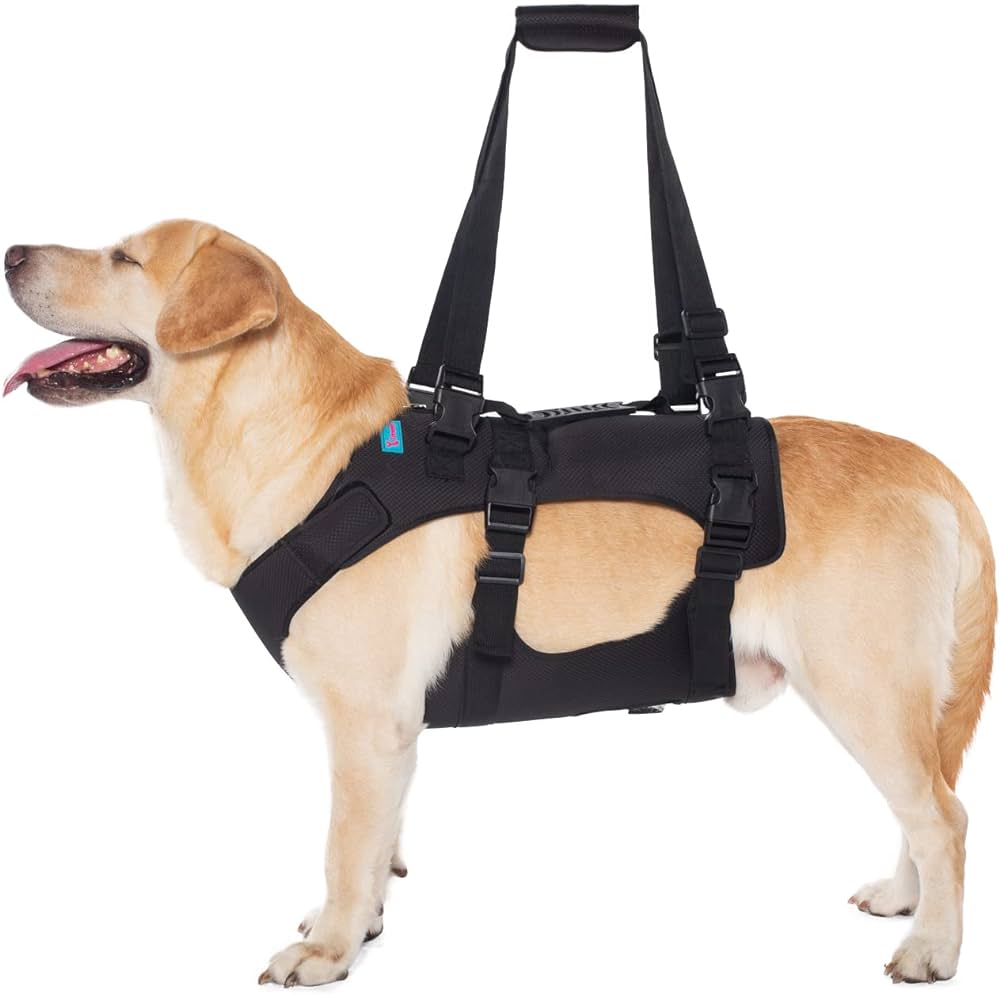
There is a sling harness, which is simply something that goes underneath the entire body and has handles that you can hold on to. This can be anything, from a towel, shopping bag that has been cut down, or something youbough on chewy. A sling is helpful if there is any spinal issues or hip discomfort, in giving full lower back and hip support. The downside to this sling is if you have a male dog, it will make it difficult to urinate outside. There is also more pressure on the bladder, so try to be aware of giving your pup more bathroom breaks.
The next type is a loop type harness, that goes around the back legs, not underneath them, and connects to a harness by the back shoulders. I prefer the help em up harness in this style, as there is a handle between the front shoulder blades, and the back hips. You can also use this style with leg braces, and keep it on for easy use. You simply lift the handle to help you dog stand up vs the sling harness you will need to lift your dog up and slide it underneath the belly.
Each harness has its own benefits. If you have a dog that has a newly injured CCL or ACL, then initially it may be easier to use a sling to help them up and down until you can get a help em up type harness. I would suggest an actual harness with handles for a CCL tear. If your dog, however, has both back legs affected, and potentially the spine, I would suggest a sling type harness, to give them better pelvis support.
Let us know if you have any questions about different types of harnesses! You can contact us via our contact page or our Facebook Page.
Healing injured dogs involves a combination of veterinary care and supportive measures at home. Always consult with a veterinarian for proper diagnosis and treatment. Here are some commonly used canine healing methods for injured dogs:
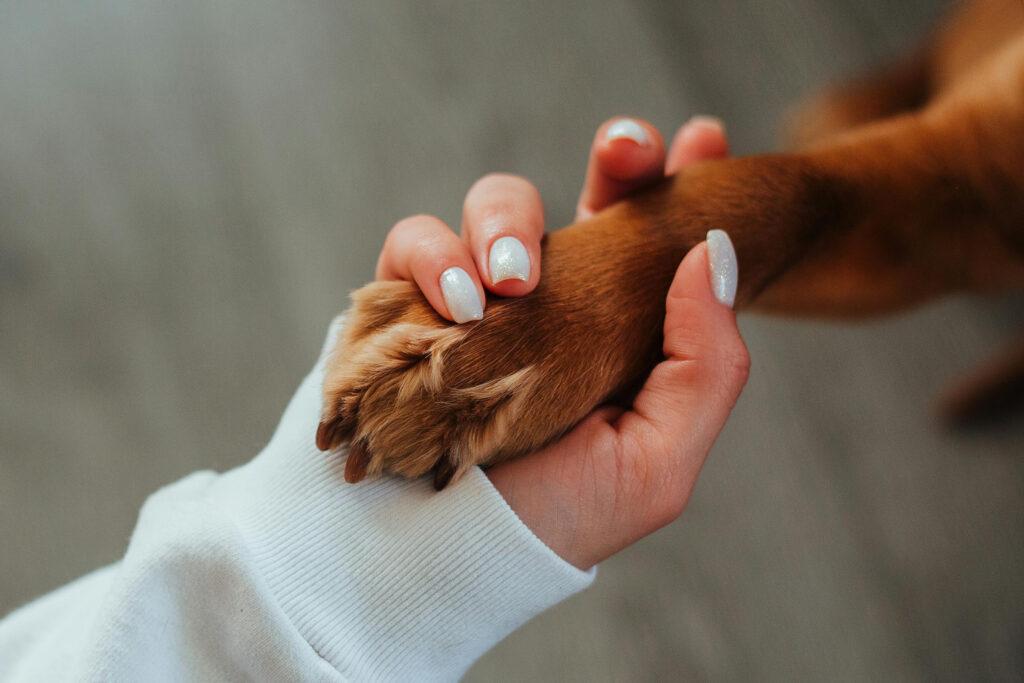
Remember, individual cases may vary, and it’s crucial to follow your veterinarian’s advice closely for the best outcome in your dog’s recovery using any canine healing methods . If you have any questions on how to help your injuried dog you can contact via our contact page or visit our Facebook page.
While home treatments can be helpful for minor injuries or as supportive measures alongside veterinary care, it’s crucial to consult with a veterinarian before attempting any treatment. Serious injuries or conditions require professional medical attention. Here are some general home treatments for injured dogs:
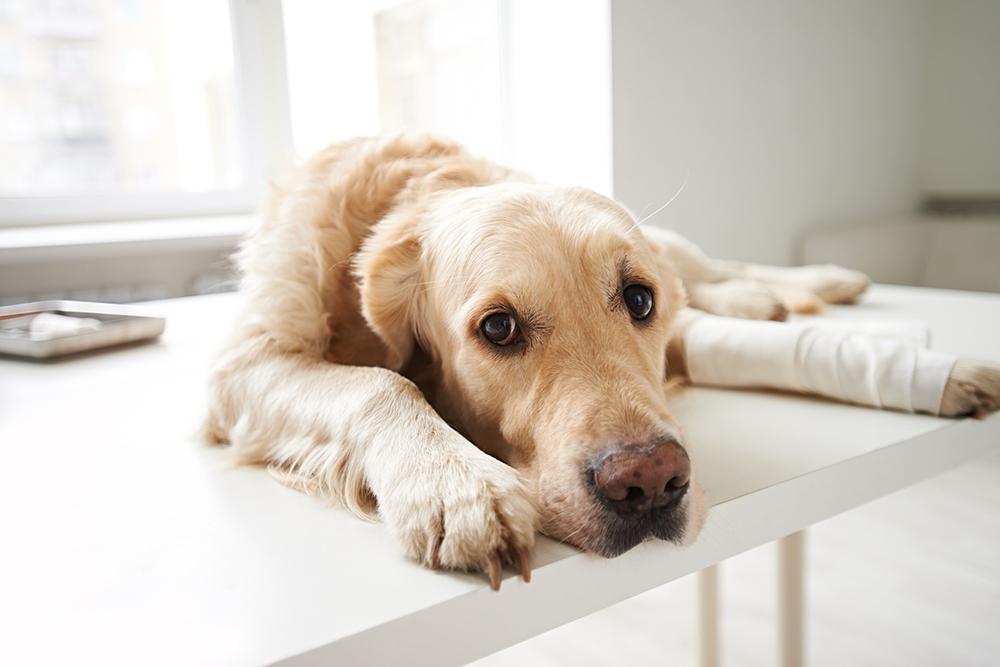
It’s crucial to note that while these home treatments can be beneficial for minor injuries or as supportive measures, they are not substitutes for professional veterinary care. If your dog experiences a significant injury or shows signs of distress, consult with a veterinarian immediately. Professional guidance ensures that the right diagnosis is made, and appropriate treatment is administered for a safe and speedy recovery. If you have any more questions about home treatments you can contact us via our contact page or visit our Facebook page.
Hi guys, this is Nikki Lead Veterinary Technician with Posh Dog Knee Braces, and today let’s discuss how many hours a day your dog should wear a knee brace. Now this also really depends on what we are treating. If we have a full CCL tear with meniscus involvement, I may suggest you use the brace more often than a patient with a partial tear.
Also, how much energy your dog has is a big factor on how many hours you really need to be using the brace. Some brace companies say wear the brace all day long, with no breaks. This can lead to a lot of problems initially, if you have not properly broken in the wearing time of your brace.
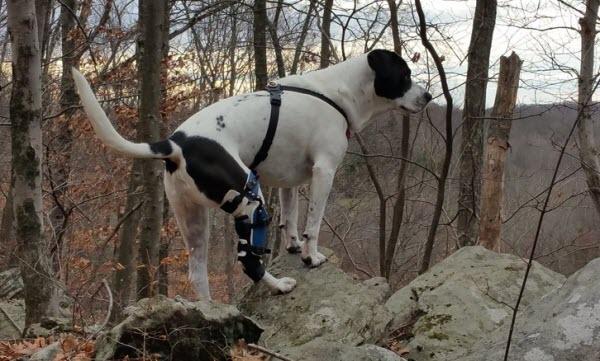
If you have a high energy dog, one that dives off of stairs and furniture, and is harder to control, you may be advised to use the brace a bit more. Now, we only suggest using braces during times that your dog is supervised. This is a medical device, and should not be worn without direct supervision. I would suggest starting out slow, just using the brace during walks and activities hours your veterinary technician will go over with you. Once your dog has been using the brace well, and you feel more confident, you can begin to increase the amount of time (hours) your dog uses the brace.
I still like to give breaks during the day, especially if there is a time they like to lay down and nap. For instance, using the brace for 2 to 3 hours in the morning, while they get the wiggles out, go potty, walk, and breakfast is perfectly fine. You may then opt to remove the brace during lunchtime, as most dogs calm down around this time. Then, you can place the brace back on in the afternoon, and remove prior to going to bed. This is just a suggested scenario, but again you do need to continue monitoring them with the brace.
We do not suggest any patient to wear the brace 8-12 hours a day, as anything that is worn that long on human or dog can cause skin irritation.
If your dog is pretty chill, relaxed, and only really active outside (such as giant breeds), then I would suggest using the brace just for activities. These can include walks, car rides, when someone comes to visit, playing with another dog, stairs, ect. If they spend most of their time laying down, it would not be comfortable to leave a brace on all day long. Let them get cozy, but we will be suggesting some Physical therapy activities to help prevent atrophy.
Put a sign outside your door, this will help discourage people from ringing the doorbell or knocking. Most dogs react to hearing a knock and doorbell, so if we can cut back on those times that will really help with preventing re-injury. Instead, put your phone number on the sign, so they can text you if someone arrives to visit.
Always feel free to speak to your service veterinary technician with any questions, that is what we are here for! Thank you, and give your dog a big hug for us!
You can contact us via our contact page or visit our Facebook page for more information.
Let Your Dog Recover With Our Custom Dog Knee Brace!
We’ve Helped Dogs All Around The World, Now We Want To Help Yours…
The Posh Dog Knee Brace is a 100% custom Dog knee brace, hand made only for your Dog. We make our custom brace with no casting. Our state-of-the-art brace for Dogs is very durable, waterproof, sand proof, and easily adjustable by customers. Our Veterinary Technicians provide personal live video supervision of measuring, and fitting of your Dog ACL brace in the comfort of your own home.
Carpal hyperextension and other wrist injuries in dogs can cause discomfort and affect their mobility. Identifying these issues early is crucial for prompt veterinary intervention. Here are some signs and symptoms, as well as potential causes of canine carpal hyperextension and other common wrist injuries:

If you suspect a wrist injury in your dog, it’s crucial to seek veterinary attention promptly. The veterinarian will conduct a thorough examination, possibly including imaging, to diagnose the specific injury and recommend an appropriate treatment plan. Treatment may involve rest, medication, physical therapy, or in severe cases, surgical intervention. Early detection and intervention contribute to a better prognosis and faster recovery for your dog. If you are interested in a Posh Carpel/Wrist Brace or have questions you can contact us via our contact form or visit our Facebook Page.
Dog knee braces, also known as stifle braces, are orthopedic devices designed to provide support, stability. These braces are commonly used in the management of various knee-related issues, including ligament injuries, osteoarthritis, or after surgical procedures. The science behind dog knee braces involves biomechanics, support, and the promotion of healing. Here are some key aspects:
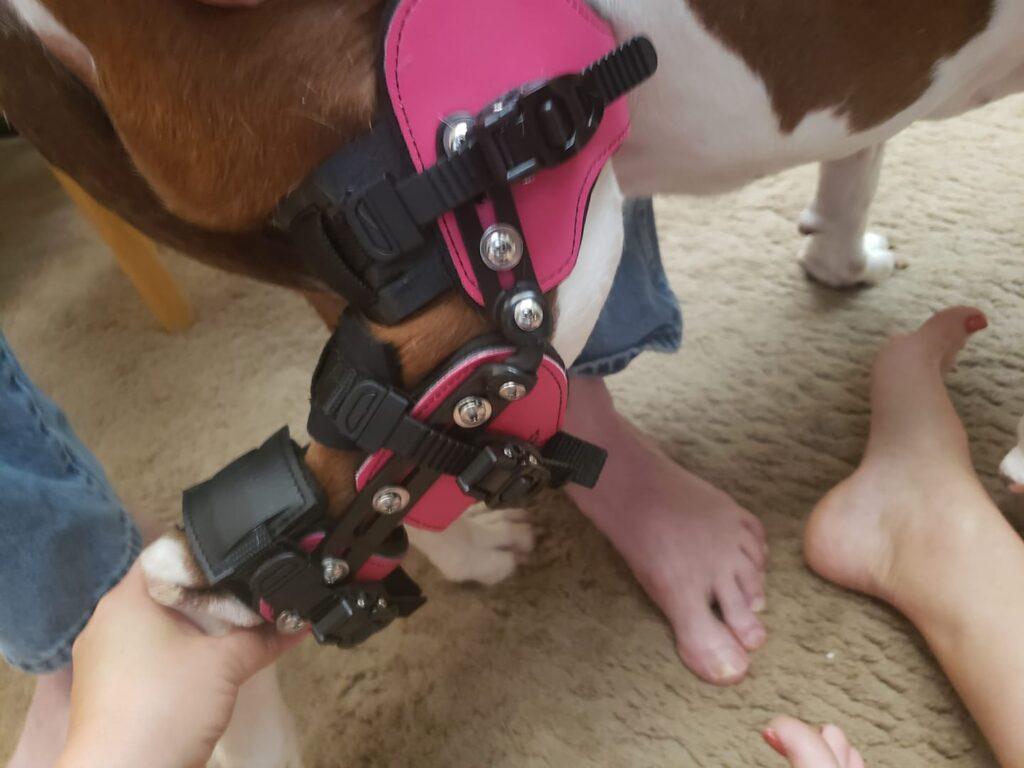
While knee braces can be beneficial, they are not a one-size-fits-all solution, and their effectiveness may vary depending on the nature and severity of the knee issue. Always consult with a veterinarian for a proper diagnosis and guidance on the use of knee braces for your dog’s specific condition. Also check the materials, and make sure the brace is custom.
If you are interested in a Posh Dog Knee Brace you can order online or contact us with more information, visit our Facebook Page to see what our customers have to say.
Dogs can be prone to injuries related to various physical activities. Understanding the types of injuries associated with specific activities can help dog owners take preventive measures and seek appropriate veterinary care when needed. Here are common activity-related dog injuries:
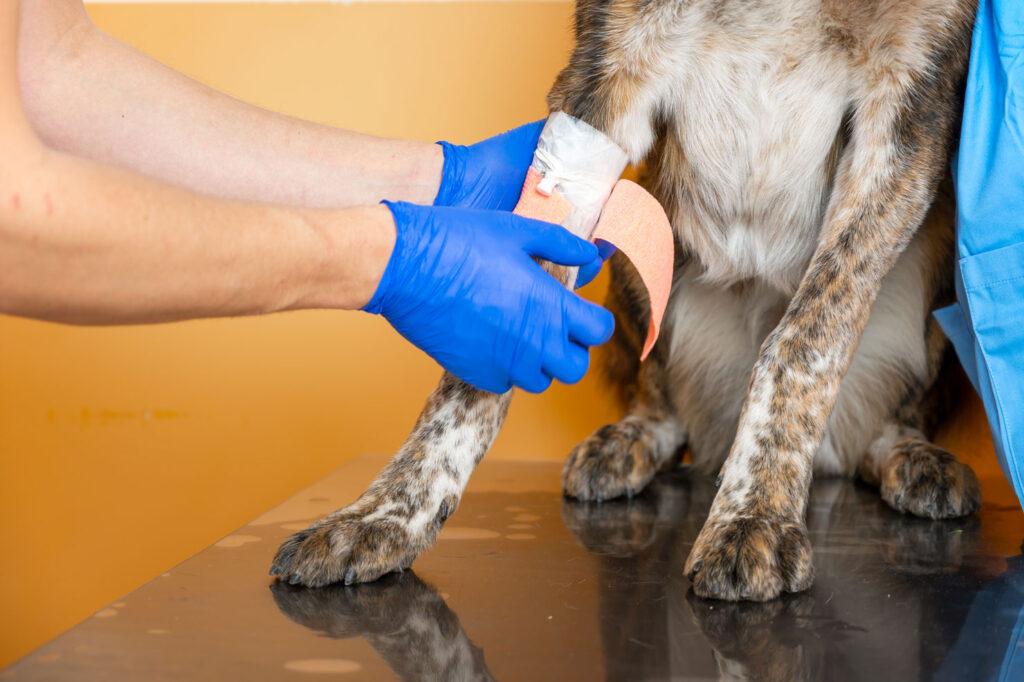
Preventing activity-related injuries involves being mindful of your dog’s limitations, ensuring they are adequately conditioned for the activity, and providing proper warm-up and cool-down periods. Regular veterinary check-ups can help detect and address any underlying health issues that might predispose a dog to injuries during physical activities. If an injury occurs, prompt veterinary attention is essential to ensure proper diagnosis and treatment.
For more information about related injuries or if you would like information about our brace contact us via our contact form or visit our Facebook page.
Holistic treatment for your dog’s injuries involves considering the overall well-being of the animal, addressing physical, emotional, and environmental factors. Always consult with a holistic veterinarian before implementing holistic approaches to ensure they are safe and suitable for your dog’s specific condition. Here are some holistic strategies for treating your dog’s injuries:

Remember that holistic approaches should complement, not replace, conventional veterinary care. It’s important to work closely with a veterinarian who has experience in holistic or integrative medicine to create a comprehensive and safe treatment plan tailored to your dog’s specific needs.
If you are interested in one of our Posh Dog Braces you contact us via our contact page or visit our Facebook Page for more information.
Enzyme therapy is a holistic approach that involves the use of specific enzymes to support the healing process in injured dogs. While some anecdotal evidence and studies suggest potential benefits, it’s important to note that this approach should be used under the guidance of a holistic veterinarian, and more research is needed to fully understand its efficacy. Here are some aspects of enzyme therapy that may be considered for quick dog injury recovery:
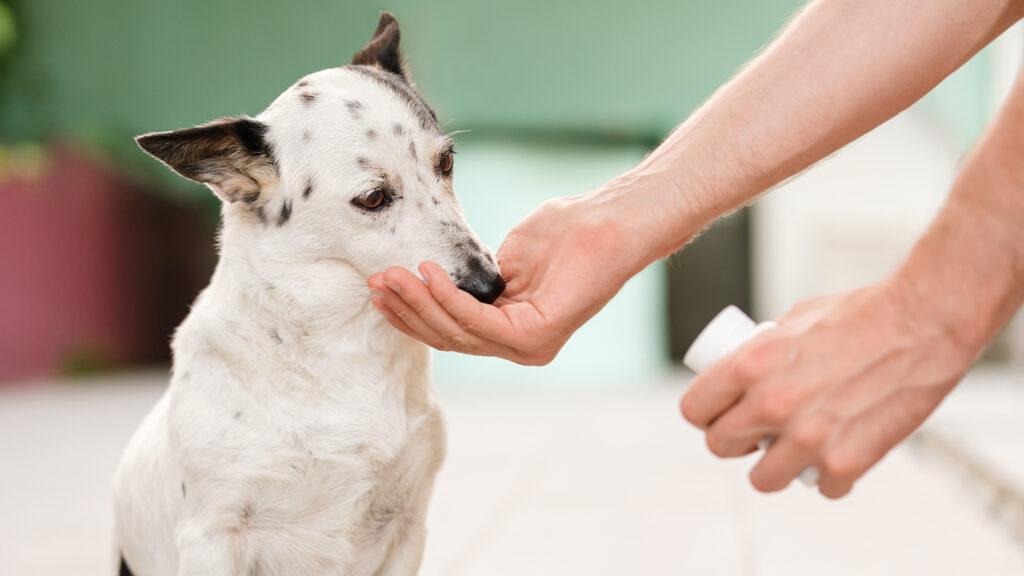
It’s essential to approach therapy with caution and only after consultation with a veterinarian. Enzyme supplements may interact with medications or have contraindications for certain medical conditions. Additionally, the quality and source of supplements can vary, so it’s important to choose products from reputable manufacturers.
While some pet owners report positive experiences with this therapy, it should not replace traditional veterinary care. Veterinary guidance is crucial to ensure that the chosen therapy is appropriate for the specific injury and overall health of the dog. Always discuss any complementary or alternative therapies with your veterinarian before incorporating them into your dog’s treatment plan.
If you are interested in a Posh Dog Knee Brace contact us via our contact form or visit our Facebook Page for more information.
Reiki is a form of alternative therapy that originated in Japan and is based on the concept of channeling healing energy through the practitioner’s hands. While scientific evidence supporting the effectiveness of Reiki is limited, some dog owners and practitioners believe that it can provide various benefits for dogs. It’s essential to note that Reiki should not replace conventional veterinary care but can be used as a complementary approach.
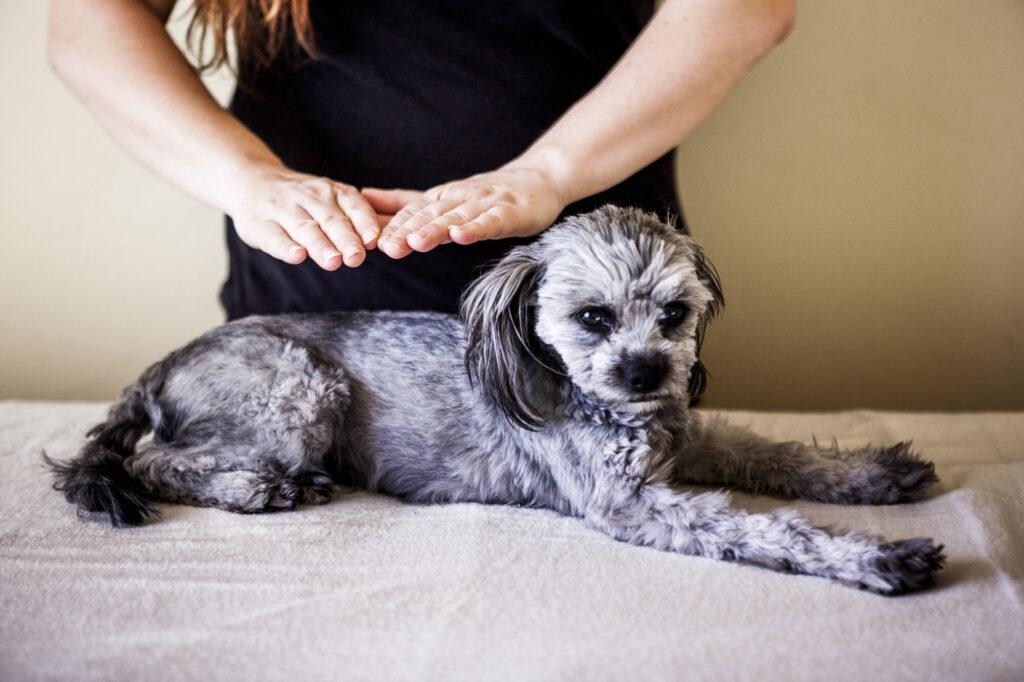
While some dog owners report positive experiences with Reiki, it’s important to approach it with an open mind and consult with a veterinarian before incorporating it into your dog’s care plan. Always prioritize conventional veterinary care for diagnosing and treating medical conditions.
For more information on how to help your dog recover with their injuries or if you are interested in a Posh Dog Knee Brace you can contact us via our contact page or visit us on Facebook.